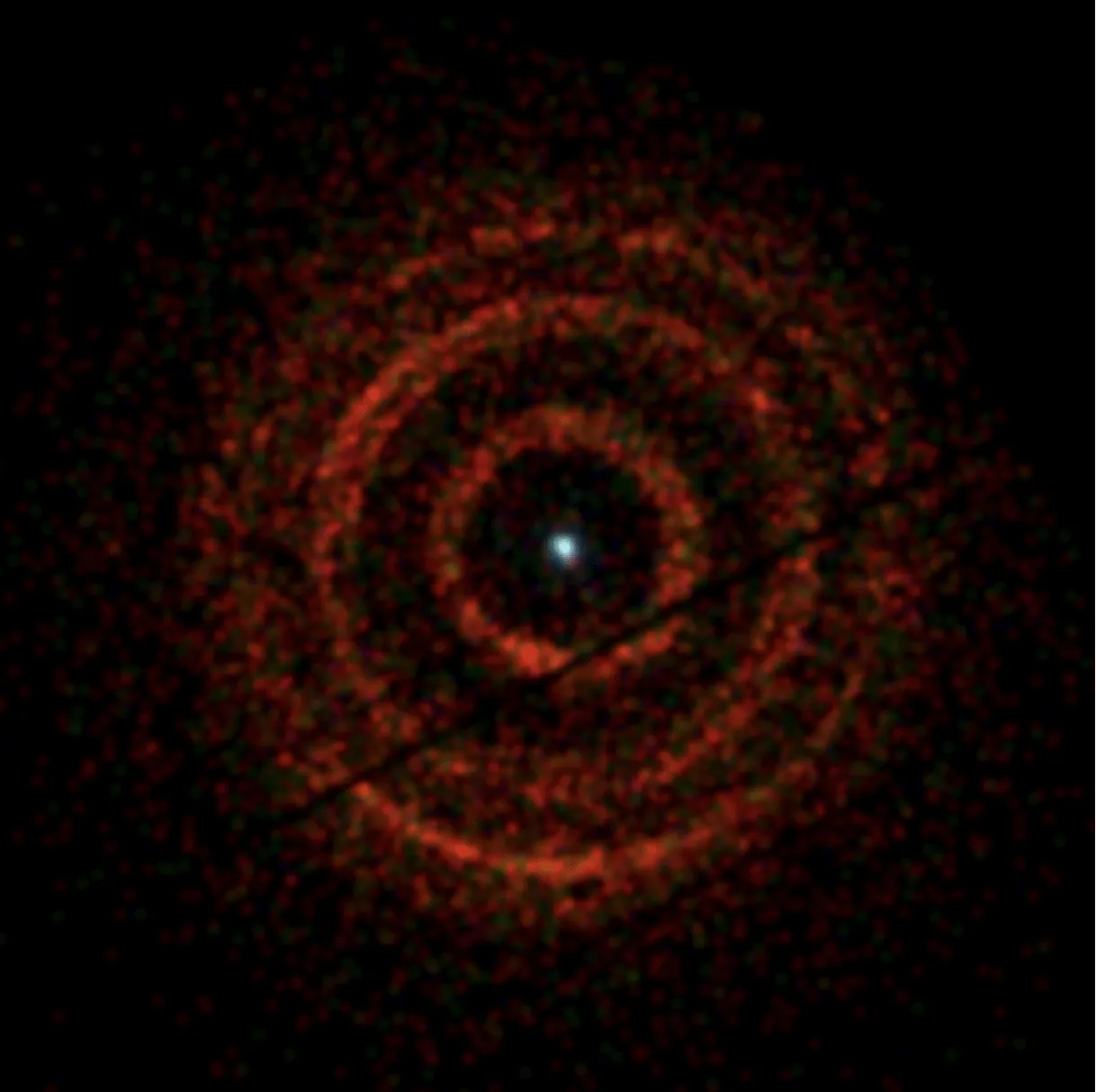
What Are Dust Scattering Halos?
Dust scattering halos form when X-ray light interacts with interstellar dust grains and reaches us with a slight delay, creating ring-like structures around X-ray sources.
Written by Astrosyo
What Are Dust Scattering Halos?
In some X-ray observations of black-hole binaries, neutron stars, or gamma-ray bursts, astronomers see a glowing circular structure around the bright source. These faint structures are called dust scattering halos. They are not lensing artifacts, camera effects, or an illusion. They are a real physical consequence of X-ray light interacting with dust grains in interstellar space.
The idea is surprisingly intuitive. Light from the source travels toward Earth, but along the way some photons collide with microscopic dust grains. These grains scatter the photons at very small angles. The scattered photons still reach Earth, but they arrive slightly later than the photons that took a direct path. This time delay stretches the light into a circular shape. What we see as a halo or ring is simply delayed, redirected X-ray light.
Why Halos Appear in X-ray Astronomy
The space between stars is not empty. It contains dust composed of silicates, carbon, ice and metals. The grains are extremely small—typically between one hundredth and one micron in size—but they scatter X-ray photons efficiently. Their size and composition allow them to interact strongly with X-ray wavelengths while remaining almost invisible in optical light. Whenever a bright X-ray source flares, the dust along the line of sight becomes illuminated.
When the source emits light, photons either travel directly to detectors or scatter from dust before reaching us. Because the scattered photons travel farther, they take more time to arrive. The result is a circular feature centered on the source. If the brightness of the source changes quickly, the radius of the halo changes accordingly, and a ring structure becomes visible. If the source emits steadily, the halo becomes smooth and diffuse.

Rings and Continuous Halos
Dust scattering halos have two visual modes. The halo appears as a sharp ring when the X-ray source brightens or dims suddenly. The sharp change in intensity allows the timing difference between direct and scattered photons to manifest as a circular edge. On the other hand, when the source shines consistently for long intervals, the delayed photons overlap in time, and the halo becomes a smooth, widely diffused circle. The only difference between a ring and a halo is the timing behavior of the source.

The halo morphology therefore acts as an indicator of the source’s light curve. Astronomers have used this behavior to identify outbursts, flares, eclipses and intermittent accretion events. In several observations of the source V404 Cygni, multiple rings formed simultaneously because light traveled through several distinct dust layers. Each dust sheet scattered a delayed copy of the flare, producing several concentric rings that expanded outward over time. With careful measurements, the distance to each dust layer could be determined.

How Dust Location Shapes the Halo
The location of the dust determines how large the halo appears. Astronomers define the dust position using a fraction:
If the dust cloud is close to Earth, the scattering angle must be larger in order for photons to reach the detector, and the halo will appear larger. If the dust cloud is close to the X-ray source, the scattering angle is small and the halo will appear tighter around the core. This simple geometric relationship enables astronomers to infer the distance to dust layers without physically reaching them.
Brightness Behavior: Why Halos Fade
Dust scattering halos are brightest near the core and gradually fade as the radius increases. This is a consequence of the scattering cross section, which depends on photon energy and scattering angle. Lower-energy X-rays scatter more strongly and produce wider halos. Higher-energy photons scatter less, producing tighter halos. The brightness is not a simple drop off; it often follows an exponential fall with radius, forming a predictable profile known as the surface brightness profile. By studying this profile, astronomers can determine grain composition and estimate how much dust exists along the line of sight.
The surface brightness profile becomes especially useful in distinguishing between single and multiple scattering events. In regions of high dust concentration or high hydrogen column density, a significant portion of photons may scatter more than once, resulting in a broader halo. Standard analytical models struggle with this effect, and accurately modeling multiple scattering requires simulation.
